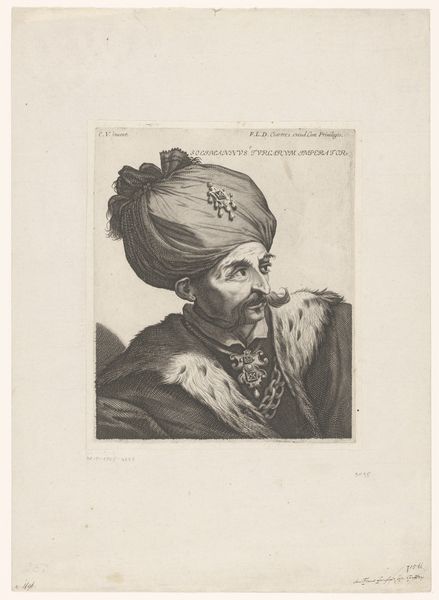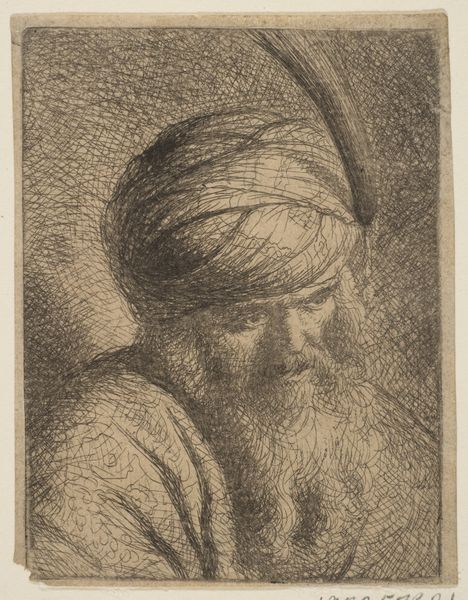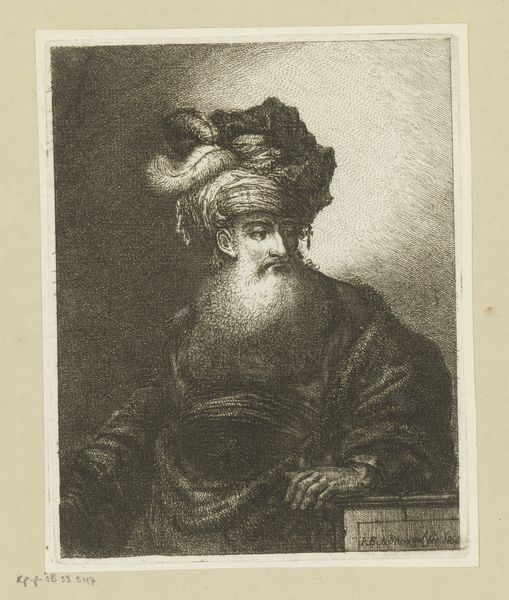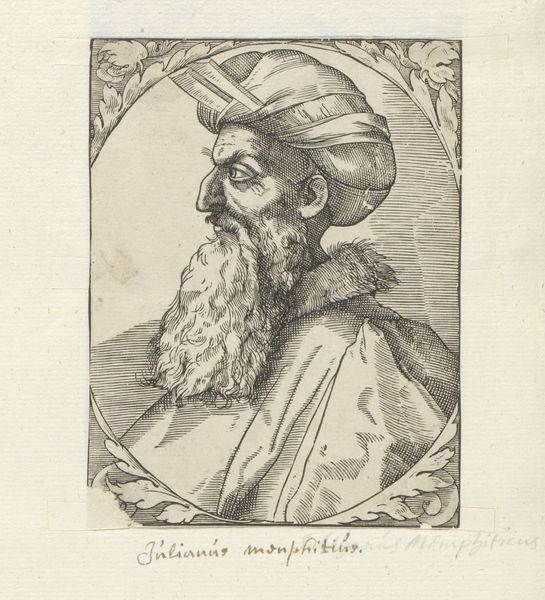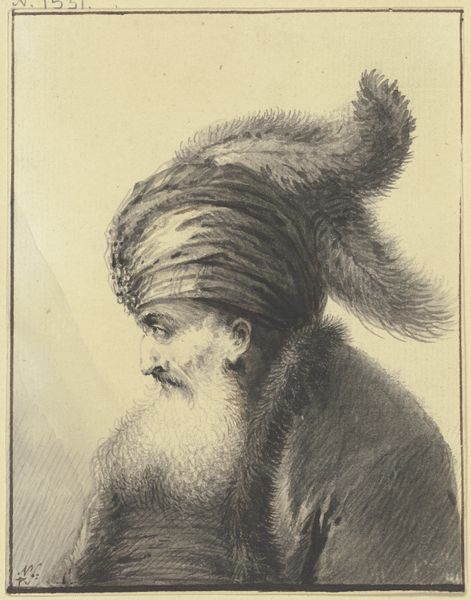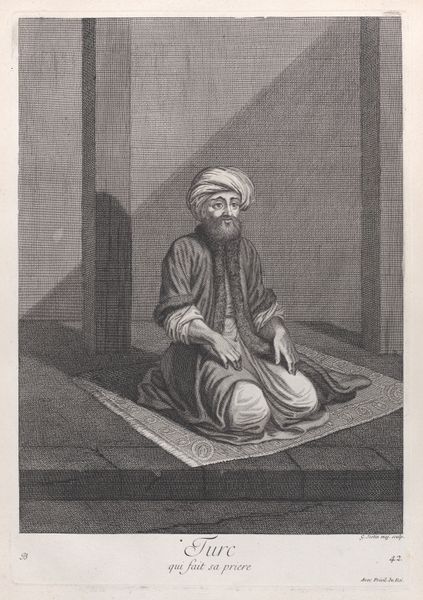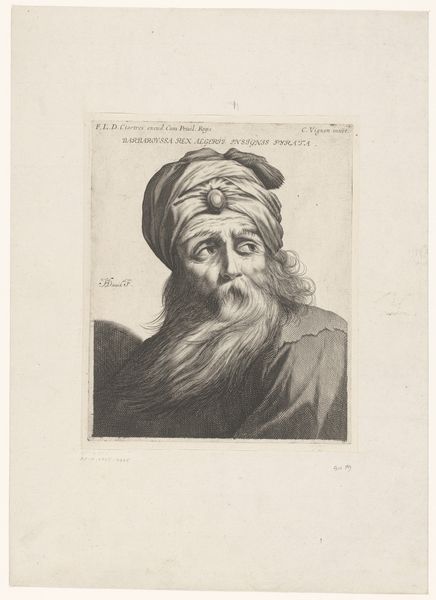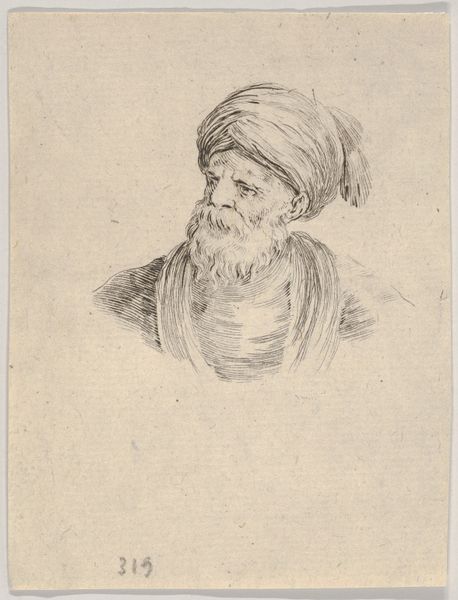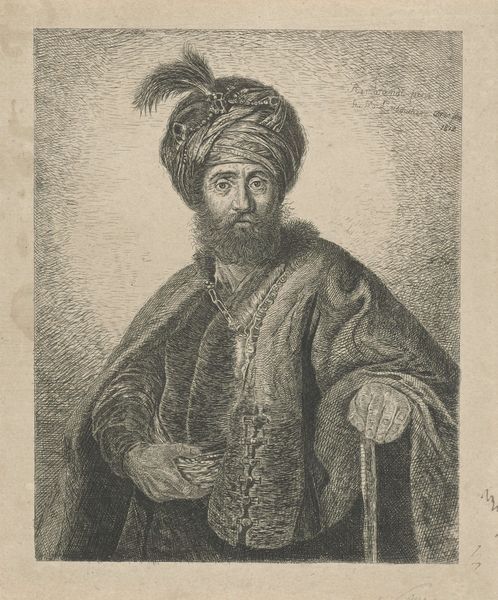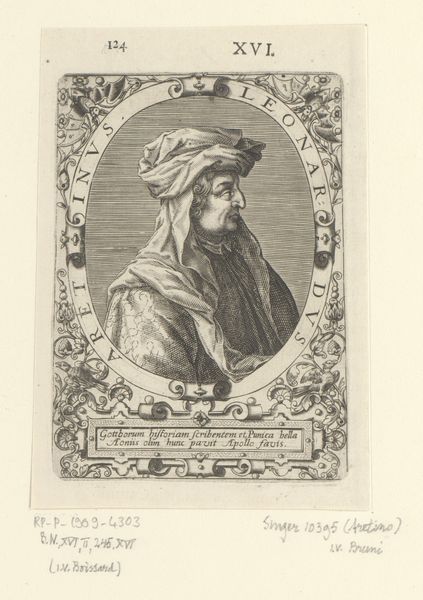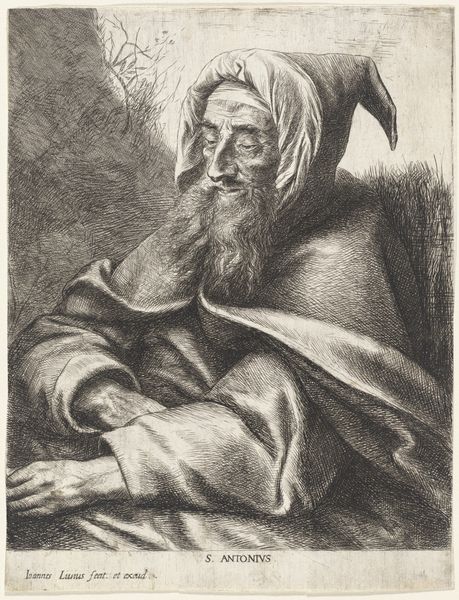
Dimensions: height 346 mm, width 285 mm
Copyright: Rijks Museum: Open Domain
Curator: Looking at this print, I immediately feel drawn in by the sitter's steady gaze, the fine hatching giving him real presence. It makes me wonder what kind of cultural exchange led to such a realistic portrayal of a man in what seems like Ottoman attire, turban and all. Editor: Yes, it's intriguing! The artwork is entitled "Buste van man met tulband"—"Bust of a Man with a Turban"—and was created by Johann Jakob Schalch sometime between 1733 and 1789. It’s an engraving. Curator: Schalch clearly wants to explore identity and exoticism here. The turban, that heavy robe, the elaborate medallion—these aren't just fashion statements; they represent an entire culture. How does he, a European artist, approach representing "the Other," and what assumptions does he carry with him? Editor: That’s key. The baroque elements certainly contribute to a sense of drama and otherness. It begs the question of representation. Was Schalch aiming for accurate cultural documentation, or was he participating in the Orientalist fantasies prevalent in Europe at the time? Curator: It's a tightrope walk, isn't it? On the one hand, this image potentially expands the visual vocabulary of the time, introducing new forms and faces to a European audience. On the other hand, that "introduction" risks reducing a complex culture to mere exotic spectacle. Editor: And the market forces play a role as well, obviously. Prints like this circulated widely, shaping public perception and potentially reinforcing biases about the East. It would be valuable to understand its circulation—where was it shown and sold, and how was it originally received? Curator: Absolutely! And thinking about reception… Today, what are we meant to make of this portrayal? Does the sitter appear dignified? Or are we, even unconsciously, perpetuating old patterns of seeing non-Western cultures through a skewed lens? The feather on his turban; it is there just to be picturesque? Editor: Questions we still grapple with, making Schalch’s print a potent reminder of the complexities inherent in cultural representation. Thank you, Johann Jakob Schalch, for challenging us, even unintentionally! Curator: Indeed. It really prompts to a deeper appreciation for the image as both an aesthetic object and a product of very specific historical forces.
Comments
No comments
Be the first to comment and join the conversation on the ultimate creative platform.
